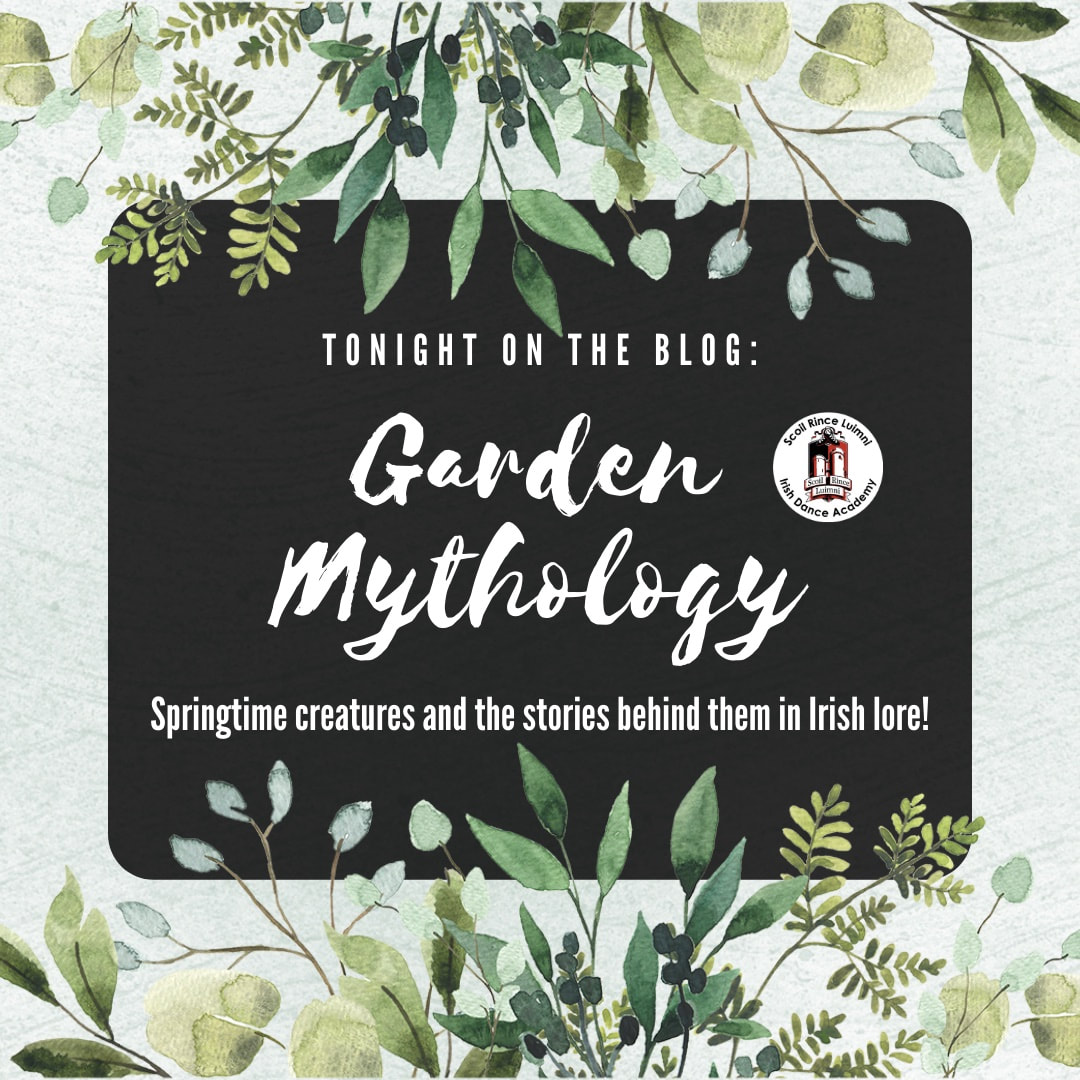|
Garden Creature Mythology, Part 1 Happy spring, to one and all! With Easter just past (check out last year’s posts about Easter and springtime Irish traditions,) it’s finally starting to feel like the blooming season is upon us. To celebrate the return of the sun (and the feeling in our fingers,) we thought we’d bring the blossoming garden to the blog today with some interesting mythology surrounding the creatures waking up around us! First up, the robin—the harbinger of spring across the world (slightly different species of this red-breasted little bird lives all across North America, Europe, and Africa.) In Irish, the European robin is called the spideóg, and spring isn’t what they’re considered a harbinger of…but rather, a death in the household (if they fly in or are tapping on your window.) However, other mythology surrounding the robin is more positive: robins are said to have plucked the thorns from Jesus’s brow, staining their breasts red (or possibly, the red is from fanning the flames of the hearth to keep the baby Jesus warm.) Similarly, they’re often depicted in Celtic folklore doing a good turn or granting wishes for people, so killing them is considered a grave offense that would result in a lump on or a tremor in the offender’s hand. As the saying goes: “Kill a robin or a wren, never prosper, boy or man." But the robin isn’t the only bird that features in Irish folklore—as you can tell from the above quote, wrens (aka dreoilín) also feature prominently. Wrens were considered a sacred bird (also called the magus avium, or “magic bird”) by the Druids of ancient Ireland who were said to have practiced divination using their song, seeing them as symbols of wisdom and divinity. They’re considered the “King of Birds” for, as the story goes, when all the birds gathered to hold a competition to elect their king, the wren defeated the eagle through a clever deception—he hid upon the eagle’s back and thus was able to fly higher than him when no one thought he could! It’s also said that a wren’s nest is protected by lightning—try to steal their eggs, and you’d be struck! Though we don’t associate them with the sun (despite the fact that not all species are nocturnal,) owls also have their place in the Celtic mythos (and in the garden—owls are important parts of their ecosystems as they control small animal populations.) The ulchabhán’s folklore is more fit for October than April, as owls are thought to be of the shadows and the otherworld, essentially representing and foretelling death (oftentimes called “the corpse bird”.) There’s even a 12th century story associated with the owl—when the god-like figure Gwydion creates a bride out of flowers (Blodeuedd—“flower face”) for his nephew Lleu. However, when the flower bride betrays her husband, she’s cursed by being transformed into an owl so she may never see the sun and will be tormented by other birds. On a barely lighter note, we have the allegorical life cycle of the féileacán—aka the butterfly, which is thought to be a physical manifestation of a soul. The transformation of a caterpillar into a butterfly exemplifies the now Christian idea of birth, death, and resurrection (and once the Druidic belief of the return to nature after death,) and the way butterflies hover in place is thought to represent a soul reluctant to move on. It’s thought that the ancient custom of flowers at a funeral derive from this belief, as flowers attract butterflies. The belief went so deep that into the 1600s, it was even common law that it was illegal to kill a white butterfly, as they were thought to be the souls of lost children. And lastly we have one of the most important visitors to any garden—the bees! Bees (aka bumbóg) and their honey have long been considered such an important part of the Irish way of life, that it’s said you must treat them as you would your own family lest they take offense. That means the bees must be told (in a whisper, they hate a harsh word) of all births, deaths (along with a black ribbon laid across the hive,) and marriages (along with a slice of cake!) Bees were thought to be very wise in Celtic mythology, able to travel between worlds as messengers—so anything they did that could be considered an omen was taken very seriously. For example, bees swarming a dead branch predicted a death nearby, but a swarm in your garden would be a sign of good luck to come. Bees were so important there were even ancient laws protecting them! Called the Bech Bretha, these laws governed the treatment of bees and the ownership of bees, including the reparations made if someone was stung (and the much harsher punishment if that person lashed out at the bees!)
While this week we looked to sky, we’ll be returning to earth the next with part 2 of garden creature mythology! This post is part of a series. Read our mythology post, all about Ireland’s name and the goddess Éiru, here. Check out the blog every Monday and Thursday for more posts about Irish history, dance culture, community news, and spotlights on our dancers, staff, and families—among other fun projects! And don’t forget to dance along with us on both Facebook and Instagram.
0 Comments
Your comment will be posted after it is approved.
Leave a Reply. |
SRL NewsFind all of our latest news on our Scoil Rince Luimni Facebook page! Categories
All
Archives
August 2022
|

 RSS Feed
RSS Feed